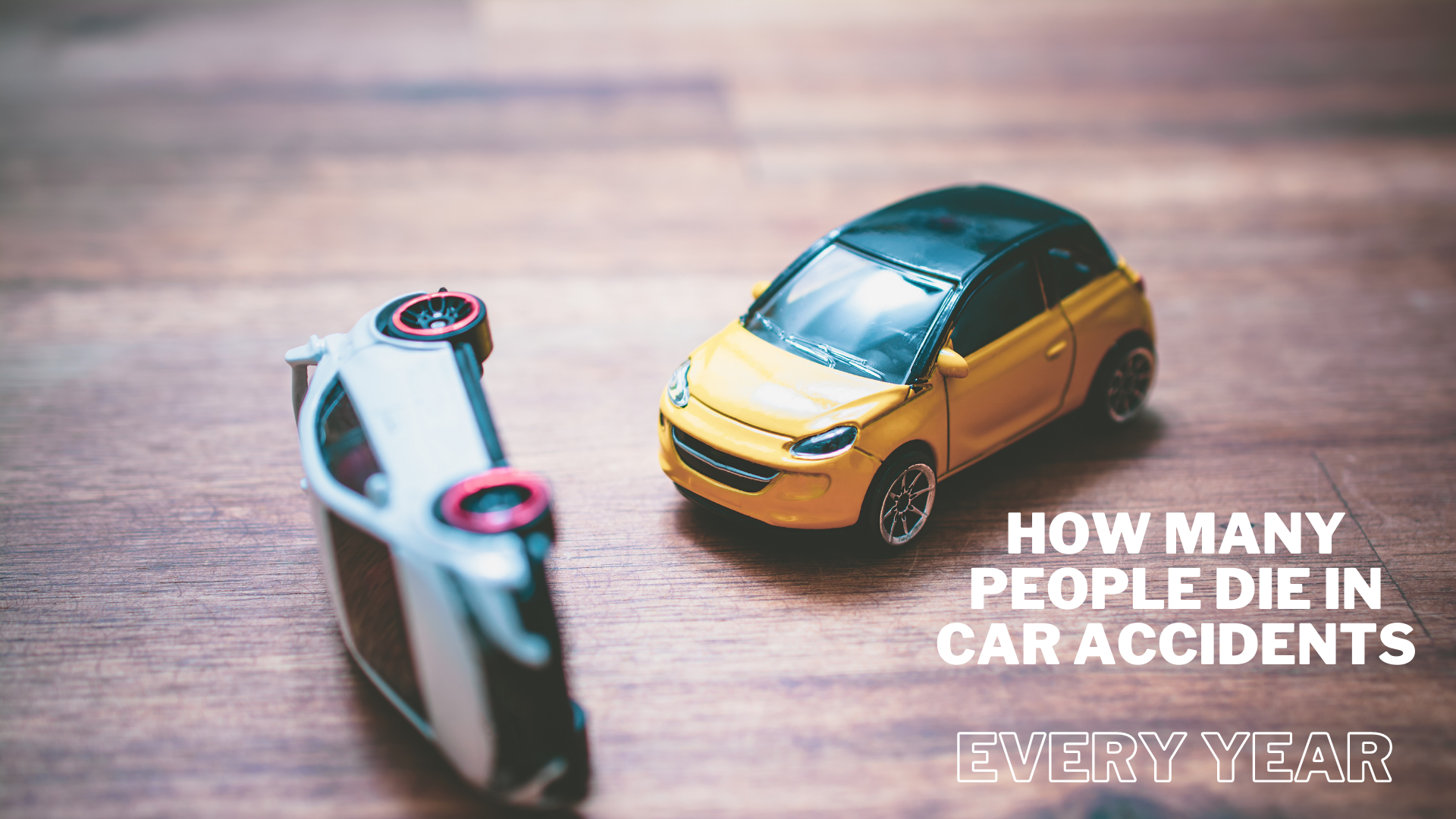It's confirmed by the statistics. There are too many distracted, negligent, and frustrated drivers out there.
Throughout the country, there are approximately six million traffic and car accidents every year, including accidents involving motor vehicles, motorcycles, and trucks.
There are three million injuries and 40,000 deaths each year from these accidents. The thought of being behind the wheel every day is scary. The car accident statistics in Florida alone are frightening. In 2007, more than 366,917 drivers were involved in accidents, according to the Florida Department of Highway Safety and Motor Vehicles. The number of motor vehicle deaths in a state is directly related to its population. According to the number of deaths per capita and miles traveled in a vehicle, motor vehicle deaths can be compared to the number of people and the amount of driving. The number of accidents can be affected by factors such as the type of vehicle driven, the speed of the car, the rate of licensure, state traffic laws, the ability to provide emergency care, as well as weather and topography.
Individuals, their families, and nations as a whole suffer economic losses resulting from road traffic injuries. For injured individuals and their families, the cost of treatment or lost productivity arises from both the cost of treatment as well as from decreased productivity as a result of the injury. Most countries lose 3% of their gross domestic product because of road traffic accidents. Continue reading to learn the risk factors, statistics, and what's being done to save lives.
Annual U.S. Car Accident Statistics
According to this section of the report, each year, car accidents cause thousands of car deaths in the United States:
- Each year, there are 6 million car accidents in the United States. That's about 16,438 people per day. The property damage accounted for 22,471 of the crashes.
- The number of Americans killed in car accidents each year exceeds 37,000.
- The death toll from accidents is more than 90 per day. In addition, 3 million people get injured or become disabled every year.
- Among healthy Americans traveling abroad, road crashes are the leading cause of death.
- Every year, more than 1,600 children under 15 are killed in car accidents. The number of fatal crashes involving 16 to 20-year-old drivers is nearly 8,000.
- Each year, the United States spends $230.6 billion on auto accidents, or $820 per person.
- According to the National Highway Traffic Safety Administration, 89.6% of drivers buckled up in 2016.
- In vehicle crashes caused by drunk drivers, 29 people die each day, according to the 2016 Road Safety Facts report.
- There is a threefold increase in car crashes among teens aged 16 to 19 compared with older drivers. Insurance Institute for Highway Safety findings show that teen drivers are at a higher risk than elderly drivers.
- Teen drivers account for roughly 12.2% of motor vehicle accidents, while older drivers cause just 7.5%.
- Cell phone use while driving caused nearly 1.6 million car accidents. Thus, nearly one out of four motor vehicle accidents are caused by texting while driving.
General Car Accident Facts and Statistics
Statistic, facts and trends about the auto industry can be found in this section:
- Fatal accidents are most likely caused by drunk driving (40%), speeding (30%), and irresponsible driving (33%).
- In the United States, 1 in 7 people do not buckle up while driving. Using a seat belt reduces the risk of serious injury by 50% and the risk of death by 45%. When a crash occurs, people who are not wearing a seatbelt are 30 times more likely to be ejected from the vehicle. Preventing road accidents through restraint is beneficial.
- In most fatal car accidents, there is only one vehicle involved, and 38% of the accidents result from a traffic collision.
- During 2018, the most accidents occurred in Texas and California.
- Weekends are the most common time for car accidents.
- Parking lots, rural highways, stop signs, and two-lane roads are the most common places where car accidents happen.
- A number of accidents occur during rush hour and at intersections as well. In a single year, you have a 0.7% chance of getting injured while driving.
- Traffic accidents cost the U.S. almost $900 billion per year, according to the National Highway Traffic Safety Administration.
- The number of U.S. fatal car accidents on highways? U.S. death rates are three times higher than in the UK - 11 deaths per 100,000 people per year.
- With 916 traffic fatalities on Arizona's I-10 highway alone in 2018, this highway is considered the most dangerous in the country.

Safety Devices Saving Lives
-
Airbags.
When a frontal collision occurs, airbags inflate to protect the occupants. The Insurance Institute for Highway Safety reports that the federal government has mandated the installation of frontal airbags in all cars since 1999. 2 790 people over the age of 13 were saved by frontal airbags in 2017 according to statistics from the National Highway Traffic Safety Administration (NHTSA). In passenger vehicles, airbags and seat belts are the most effective safety features. In front-seat passenger cars, seat belts reduce fatality risks by 45 percent. When no seatbelt is used, frontal airbags reduce fatalities by 14 percent. When a seatbelt is used, fatalities are reduced by 11 percent.
-
Seat belts.
In 2017, seat belts saved 14,955 lives among occupants of passenger vehicles. Nearly 83 percent of passengers who were totally ejected from their vehicles were killed in fatal crashes in 2017. If used properly, seat belts reduce deadly and moderate-to-critical injury risks by 45 percent and 50 percent respectively among occupants of front-seat passenger cars. By comparison, occupants of light trucks are at a 60 percent and 65 percent reduced risk.
-
Child Safety Seats.
The NHTSA reports that in 2017, 325 children under 5 saved their lives by using safety seats.
-
Motorcycle Helmetsgs.
1,872 motorcycle riders were saved in 2017 because of helmets, according to NHTSA estimates. The helmets would have prevented 749 additional deaths if all motorcyclists had worn them. Motorcycle helmets are estimated to prevent fatal injuries to 37 percent of motorcycle riders and 41 percent of motorcycle passengers. As a result, 37 motorcycle riders who died in crashes without wearing helmets could have been saved if they had worn helmets.
-
Electronic stability control:
Starting in 2012, all vehicles manufactured by the National Highway Traffic Safety Administration (NHTSA) must have electronic stability control (ESC).The requirement must be met by all new passenger cars, light trucks, SUVs, and vans. By controlling brake and engine power, the ESC helps prevent rollovers and other types of crashes. National Highway Traffic Safety Administration statistics estimate that ESC saved about 1,949 lives, 857 of them in passenger cars, and 1,091 lives among light truck and van occupants in 2015. In 2015, 1,575 lives were saved, compared to 1,380 lives in 2014 and 1,575 in 2013.
Reducing Car Accidents
Governments, industry, non-governmental organizations, and international agencies must take part in reducing road risks. A diverse range of disciplines is also required, such as the participation of engineers, designers of motor vehicles, law enforcement officers, physicians, educators, community groups and road users.
In order for individuals and governments to understand the issue and take action, strong public awareness campaigns are required. They must also introduce or amend laws that do not exist or are ineffective to raise awareness.
Sweden was the first country to implement Vision Zero in the 1990s, which promotes safe, healthy and equitable mobility for all. Many countries around the world have now adopted Vision Zero. The Vision Zero philosophy holds that accidents can be prevented and compensates for inevitable human error on the road.
Vision Zero acknowledges that accidents and serious injuries resulting from human error will occasionally occur, so the road system and related policies should be designed to prevent them. Safe systems must be designed in order to achieve this.
In order to prevent road deaths and serious injuries, Safe System assumes that all aspects of our transport system are designed to protect the users of the road and protect them from errors they will make.
Safe System Approach considers the whole system of road transport, including the road surfaces, the roadside, traffic speeds, and all road users. A truly inclusive approach, it addresses the needs of all users of the highway system, from motorists, to motorcyclists, to passengers, pedestrians, cyclists, to those who operate commercial vehicles.
Contact DOCS4PI After a Car Accident
According to Florida law, if you are hurt in a car accident, you must get a medical evaluation within 14 days in order to qualify for personal injury protection insurance coverage. The first visit should include documentation of any injuries. Call #1-888-DOCS4PI for medical evaluation if you have been injured in a car accident. Our doctors have access to some of the best attorneys in their regions and know their specialties if you need legal representation.





